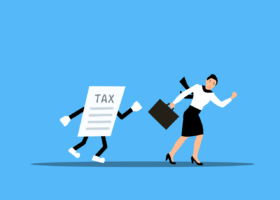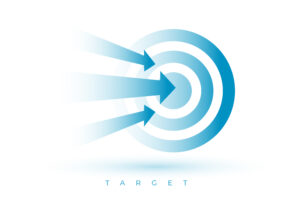4-Minute Read
“I have no sunk costs.”
- Daniel Kahneman
Have you ever read the work of Daniel Kahneman? If so, you have probably gained valuable insights into how you and the people around you make judgments and decisions.
An author, psychologist, and winner of the Nobel Prize in economics, Kahneman died this past March at the age of 90.
In a Wall Street Journal article shortly after Kahneman’s passing, Jason Zweig reminisced about his time working together. Zweig was a key contributor to Kahneman’s bestselling book Thinking, Fast and Slow. One comment resonated with me:
Danny could rework what we had already done as if it had never existed. Most people hate changing their mind; he liked nothing better, when the evidence justified it. “I have no sunk costs,” he would say.
Let’s try to appreciate how liberating and productive it can be to live without sunk costs.
What are sunk costs? We can look at it in a couple of ways. In the investment world, the decision to invest additional resources in a losing account when better investments are available is known as the sunk cost fallacy.
In finance research, there’s a documented massive preference for selling winners rather than losers. Kahneman explains this as narrow framing. An investor has set up a mental account for each share bought and wants to close each account as a gain.
If you were aiming to be a “rational agent,” you would consider the overall view of the portfolio and strive to select a path that is most likely to perform well in the future. Only the future costs and benefits are important. Whether the current investment is currently a winner or loser wouldn’t be a strong consideration.
Part of this comes down to the way you frame the problem. If framed as a choice between giving yourself pleasure and causing yourself pain, you’ll likely choose the path of pleasure. Yet a sunk cost cannot be recovered no matter your next decision. So, ideally, you make that decision without the influence of your past decisions. Easy, right?
Kahneman observed, through simple yet clever experiments, that humans are not purely rational decision-makers. Emotions such as guilt and regret frequently play a role. If a feeling of loss is involved, you may invest more time, money, and effort even if it is not in your best interests.
I recently went through this situation in my own business. I invested in a marketing program that required a large upfront, non-refundable cost. After some time, I realized it wasn’t the right fit for my firm. Despite this, I continued to pour money into it for several more months, falling into the sunk cost trap. I only managed to break free from this trap when I took a step back and recognized what was happening.
When it comes to investments, determining the right time to “sell a loser” can be challenging. One approach is to work backward from the decision. Imagine that you have already sold the investment and the cash from the sale is in your brokerage account. Would you buy back that same investment? If you would buy back the same investment, then perhaps it’s not yet a sunk cost. If you would prefer to move on to a new investment, then maybe it’s time to do so in real life.
Tax Note: If you are knowledgeable about taxes, you might recognize in the last example that “wash sale” considerations may apply. The broader point is when acknowledging an investment mistake, sometimes our tax code can provide the nudge you need. Realizing a loss can reduce your taxes, while realizing a gain increases them.
The sunk cost fallacy extends to many other areas of life beyond investing. Say you have invested time and effort into a job, a relationship, or a project. The tendency can be to keep doing that because you’ve already “sunk” so much into it.
But if something is not working, it takes some courage to stop what you’re doing and start a new direction. On the flip side, knowing when to hang in there a little longer takes wisdom. The right choice is often learned in hindsight. Any action risks facing regret.
Has this admittedly low-stakes situation ever happened to you? You start watching a movie, and 30 minutes in, you realize it’s not good. However, you continue watching for another 30 minutes or even finish it. I wish it were as easy as reading the Rotten Tomatoes reviews before choosing a movie. It helps me sometimes. Ironically, it can make the situation worse! If I start a highly-rated movie and don’t enjoy the first 30 minutes, I’m more likely to keep watching because other critics and the audience say it’s great.
Simply being aware of the sunk cost fallacy, as those in economics and business courses often are, is one way to mitigate its negative effects. As Kahneman details in his writing, try to override System 1, the fast-thinking subject to these kinds of biases in the first place. You need to know when to activate System 2, which is slow thinking that can be more deliberate and logical.
Consider thinking of your decisions as small experiments. It might be easier to move on from something if you approach it as a trial-and-error process. If something doesn’t work out, you can hopefully learn something about yourself or what to avoid next time. If you view your decisions as learning experiences, you may be more willing to abandon projects at the right time.
Living without sunk costs, like Daniel Kahneman, can be empowering. However, it might also be frustrating for those close to you. If your decisions affect others, be careful of getting caught up in their sunk-cost fallacies.
Learning when to let go can be invaluable in investing and life.
If you have comments or questions on this piece, please drop me a line at: [email protected]
References
- https://www.wsj.com/finance/investing/daniel-kahneman-behavioral-economics-270c9797
- https://www.amazon.com/Thinking-Fast-Slow-Daniel-Kahneman/dp/0374533555
The information on this site is provided “AS IS” and without warranties of any kind either express or implied. To the fullest extent permissible pursuant to applicable laws, Krishna Wealth Planning LLC (referred to as “KWP”) disclaims all warranties, express or implied, including, but not limited to, implied warranties of merchantability, non-infringement, and suitability for a particular purpose.
KWP does not warrant that the information will be free from error. None of the information provided on this website is intended as investment, tax, accounting or legal advice, as an offer or solicitation of an offer to buy or sell, or as an endorsement of any company, security, fund, or other securities or non-securities offering. The information should not be relied upon for purposes of transacting securities or other investments. Your use of the information is at your sole risk. Under no circumstances shall KWP be liable for any direct, indirect, special or consequential damages that result from the use of, or the inability to use, the materials in this site, even if KWP or a KWP authorized representative has been advised of the possibility of such damages.
In no event shall KWP have any liability to you for damages, losses, and causes of action for accessing this site. Information on this website should not be considered a solicitation to buy, an offer to sell, or a recommendation of any security in any jurisdiction where such offer, solicitation, or recommendation would be unlawful or unauthorized.





